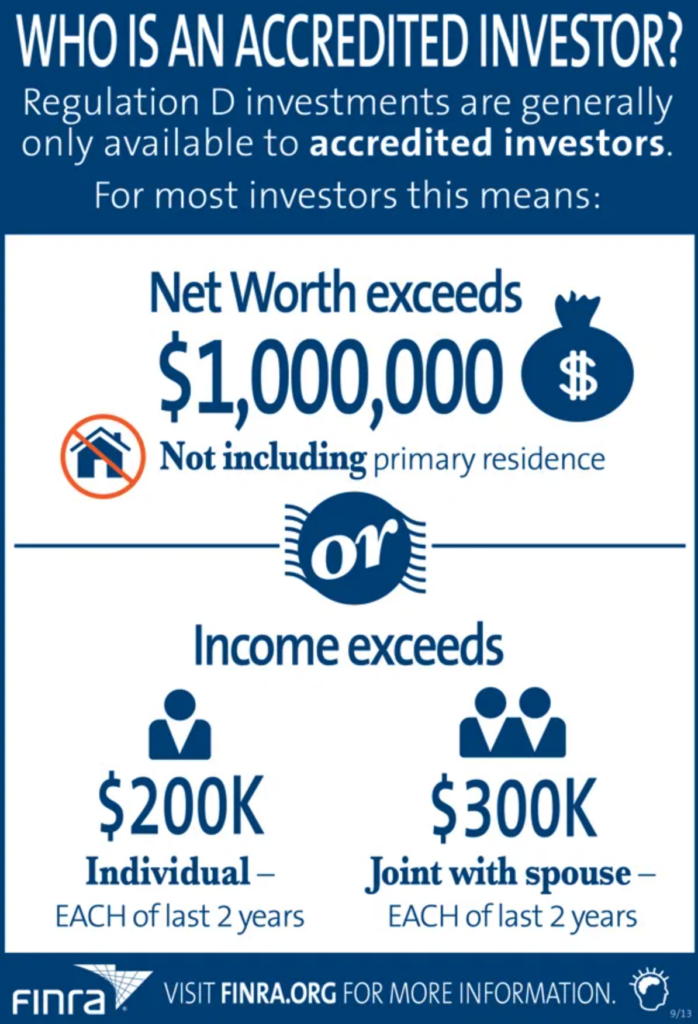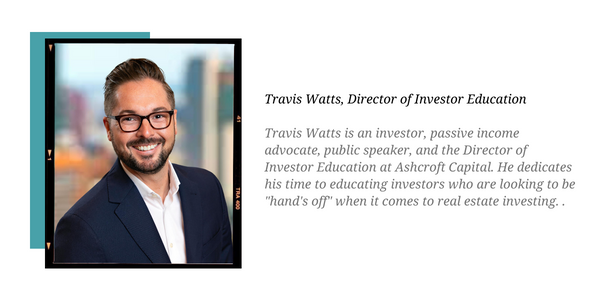March 2, 2023
By: Travis Watts, Director of Investor Education
This whitepaper takes a look at the term “accredited investor.” Every week I have the privilege to speak with investors who are excited to start investing in multifamily syndications or real estate “private placements.” These investors are usually on the search to find access to deals. Since I am a full-time passive multifamily investor myself, I’m always happy to lend a hand. However, it is essential to note that many operators and general partners in this space require an accredited investor status to participate in their offerings.
What does accredited investor mean anyway? Besides a designation that gives a person access to private placement investment opportunities.
The SEC (Securities and Exchange Commission) definition of an accredited investor, in the context of a natural person, includes anyone who:
● Earned income that exceeded $200,000 (or $300,000 together with a spouse) in each of the prior two years, and reasonably expects the same for the current year, OR
● Has a net worth over $1 million, either alone or together with a spouse (excluding the value of the person’s primary residence).[1]
There are other ways to qualify [2], but for this guide, I assume most of the audience falls under the individual accredited investor status.
Why Accreditation Exists
The SEC created this definition to identify investors and entities considered “sophisticated” and can absorb a potential financial loss. Essentially, the criteria were created as a protective measurement to protect inexperienced investors from getting into riskier projects, mainly because they may not have the financial means to cover a loss. Additionally, the SEC uses this label to regulate investment companies against advertising to or soliciting investments from non-accredited investors.[3]
The Advantages to Being Accredited
In short, the advantage to being an accredited investor is that you have an opportunity to hear about more deals, gain access to them, and ultimately invest in those deals if you choose.[4] A few examples of accredited investor opportunities may include:
● Real Estate Syndications (Private Placements)
● Angel Investing / Venture Capital
● Hedge Funds
Becoming an Accredited Investor
It’s simple to “claim” accredited investor status. Some private placements only require self-qualification. Essentially, you check a box as part of the legal documents that certify you are an accredited investor and by which method you meet the qualification requirements. There are, of course, additional disclaimers and fields where you confirm that you understand the implications involved.
In other types of private placement offerings, such as a 506(c), you may be required to submit a letter of verification from a CPA, attorney, broker-dealer, or a third-party verification service such as www.verifyinvestor.com. In any case, you should only certify that you are an accredited investor if you are. If you falsely claim that you are accredited, it could cause some legal ramifications down the road for you and the company you invest with.[5]
Summary
Ultimately, being an accredited investor allows you access to additional investment offerings and opportunities that most do not have access to. If you are actively looking for deals and talking to investment firms in the industry, it is likely that you will come across opportunities for accredited investors only. Keep in mind that this is for compliance and regulation purposes. If you are not an accredited investor, don’t worry, there are plenty of investment opportunities available that you may be able to participate in as a non-accredited but “sophisticated” investor.
Download the whitepaper PDF here.
If you would like to learn more about investing in multifamily assets, visit https://info.ashcroftcapital.com/fund, or schedule a call with our Investor Relations Team at investorrelations@ashcroftcapital.com.
Sources:
1. “Accredited Investors – Updated Investor Bulletin.” Accredited Investors – Updated Investor Bulletin |
Investor.gov, April 14, 2021. https://www.investor.gov/introduction-investing/general-resources/newsalerts/alerts-bulletins/investor-bulletins/updated-3
2. “SEC Modernizes the Accredited Investor Definition.” SEC Emblem, August 26, 2020.
https://www.sec.gov/news/press-release/2020-191
3. Rhiannon, Alexis. “Accredited Investors Have Access to Complex, Loosely Regulated Investments.” Business
Insider. Business Insider, April 27, 2021. https://www.businessinsider.com/accredited-investor
4. Baldwin, James Garrett. “How to Become an Accredited Investor.” Investopedia. Investopedia, November 30,
2021. https://www.investopedia.com/articles/investing/092815/how-become-accredited-investor.asp#:
5. Napoletano, E. “What Does It Take to Be an Accredited Investor?” Forbes. Forbes Magazine, November 30, 2021.
https://www.forbes.com/advisor/investing/what-is-accredited-investor





